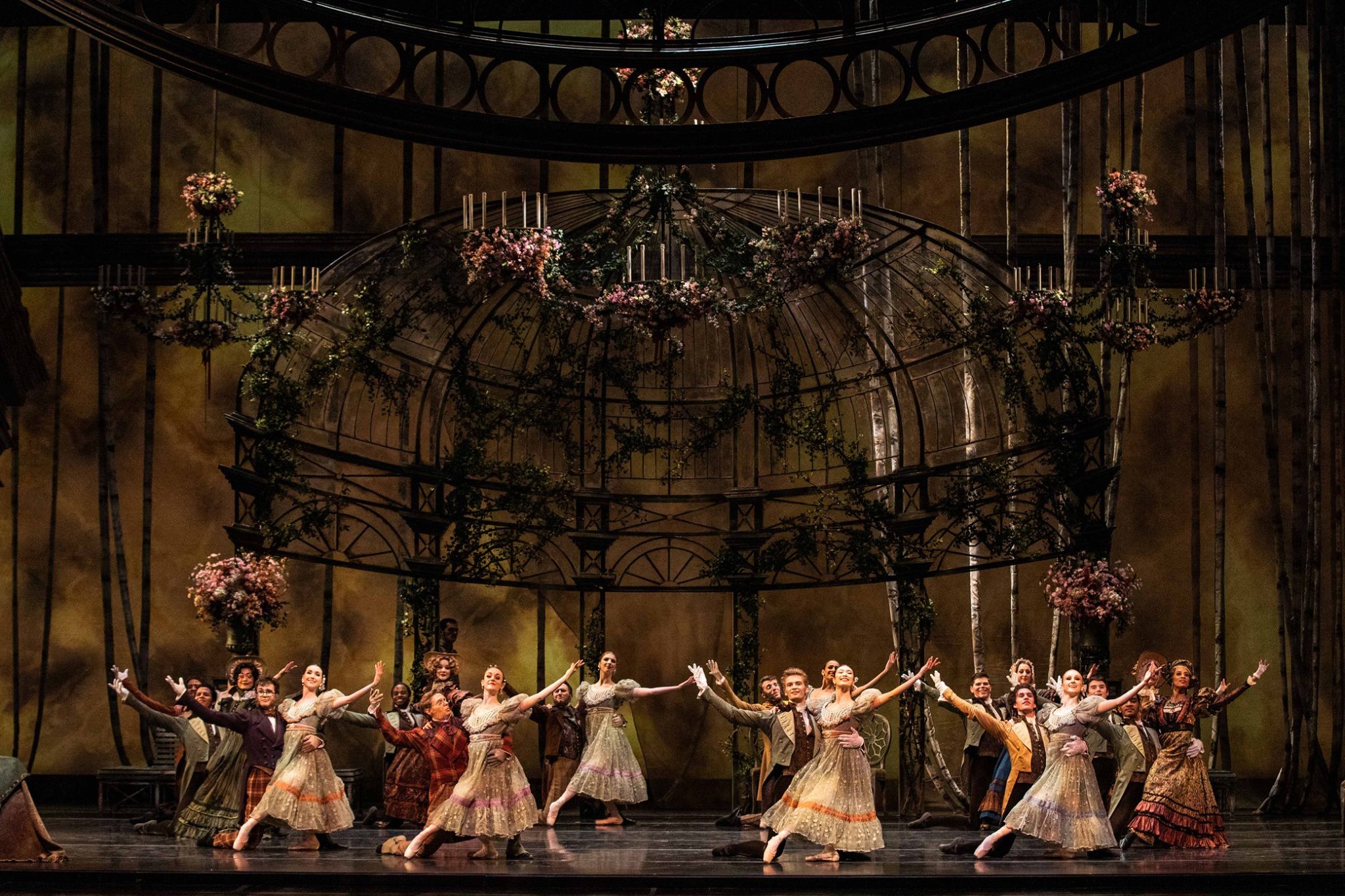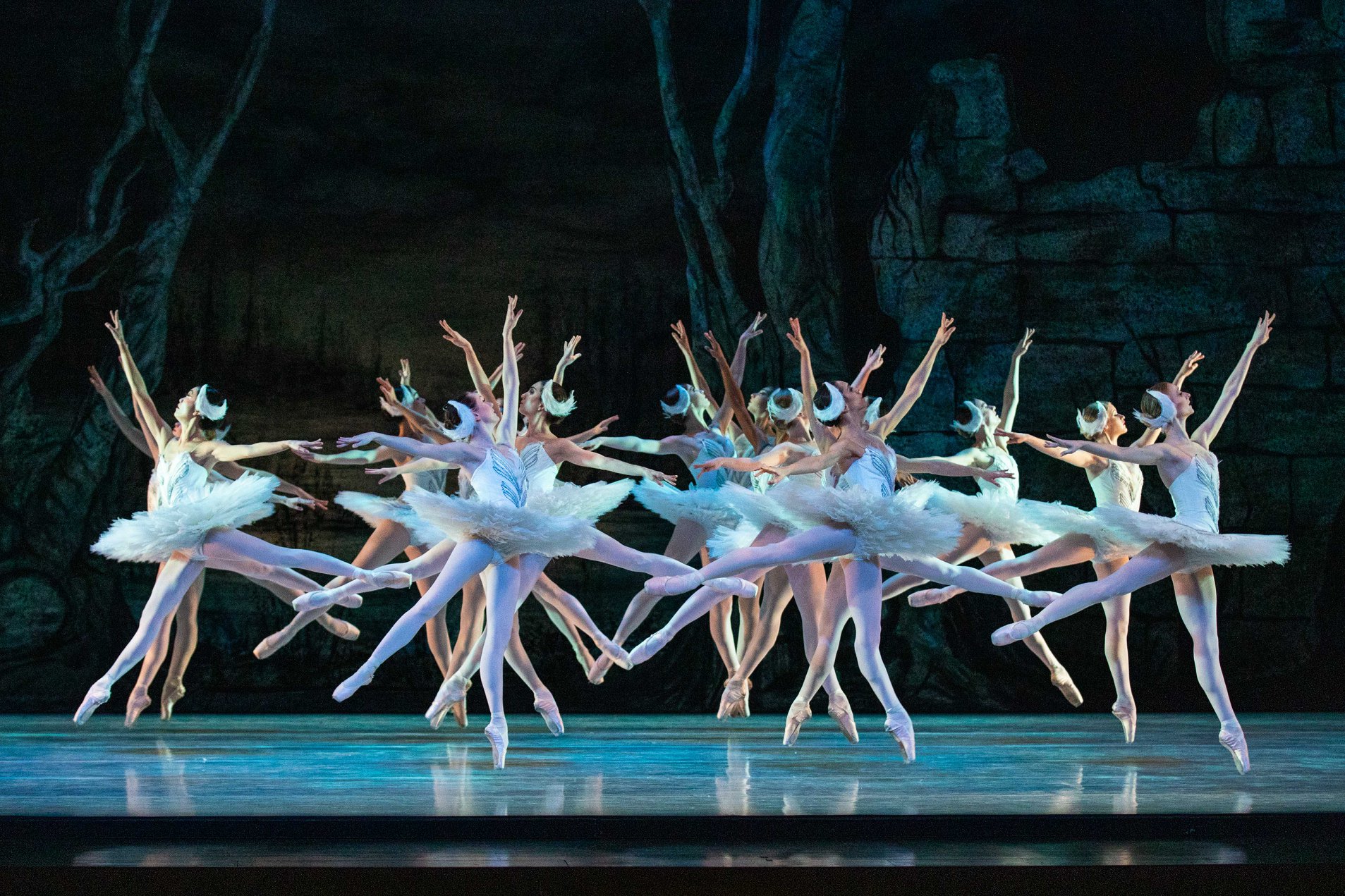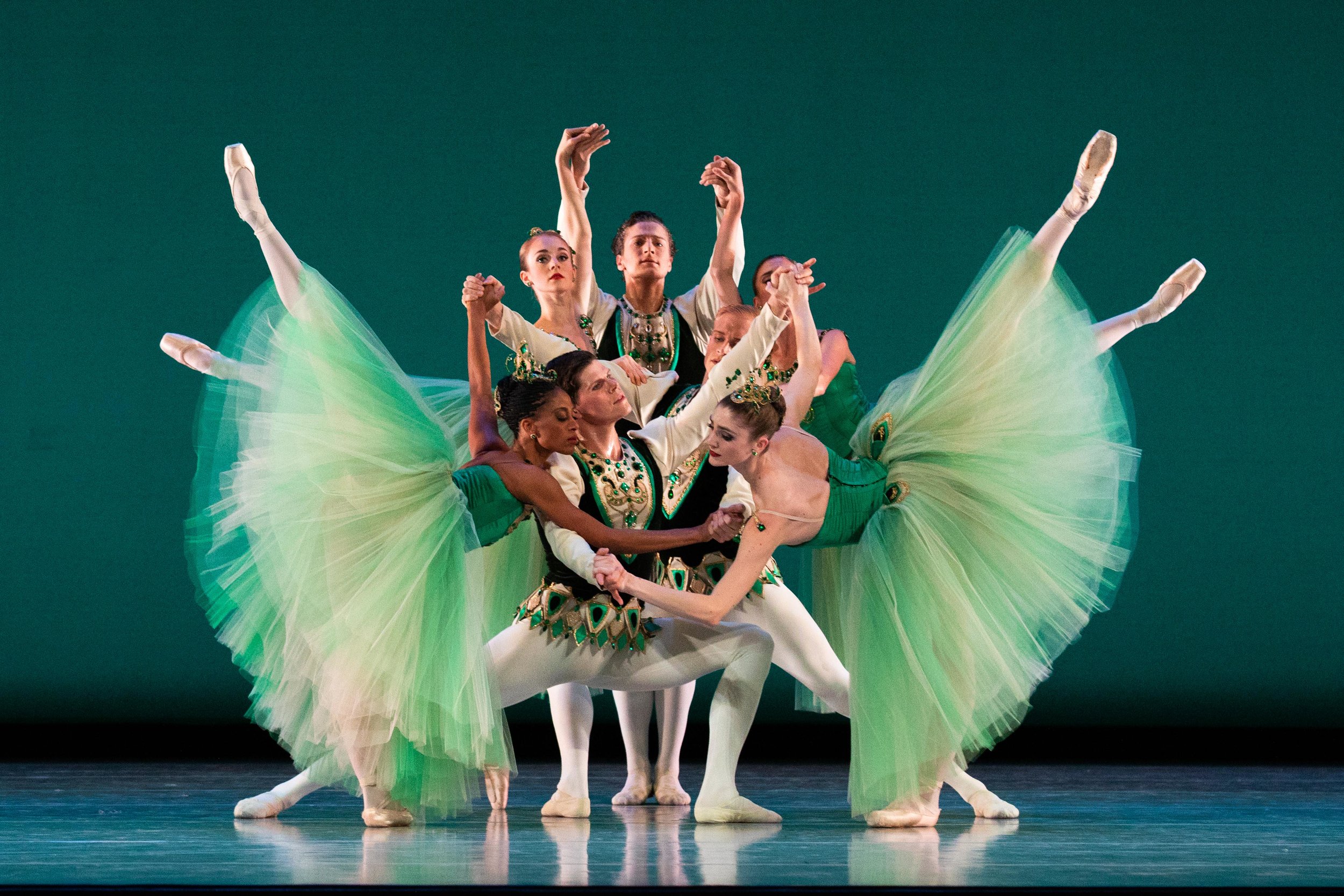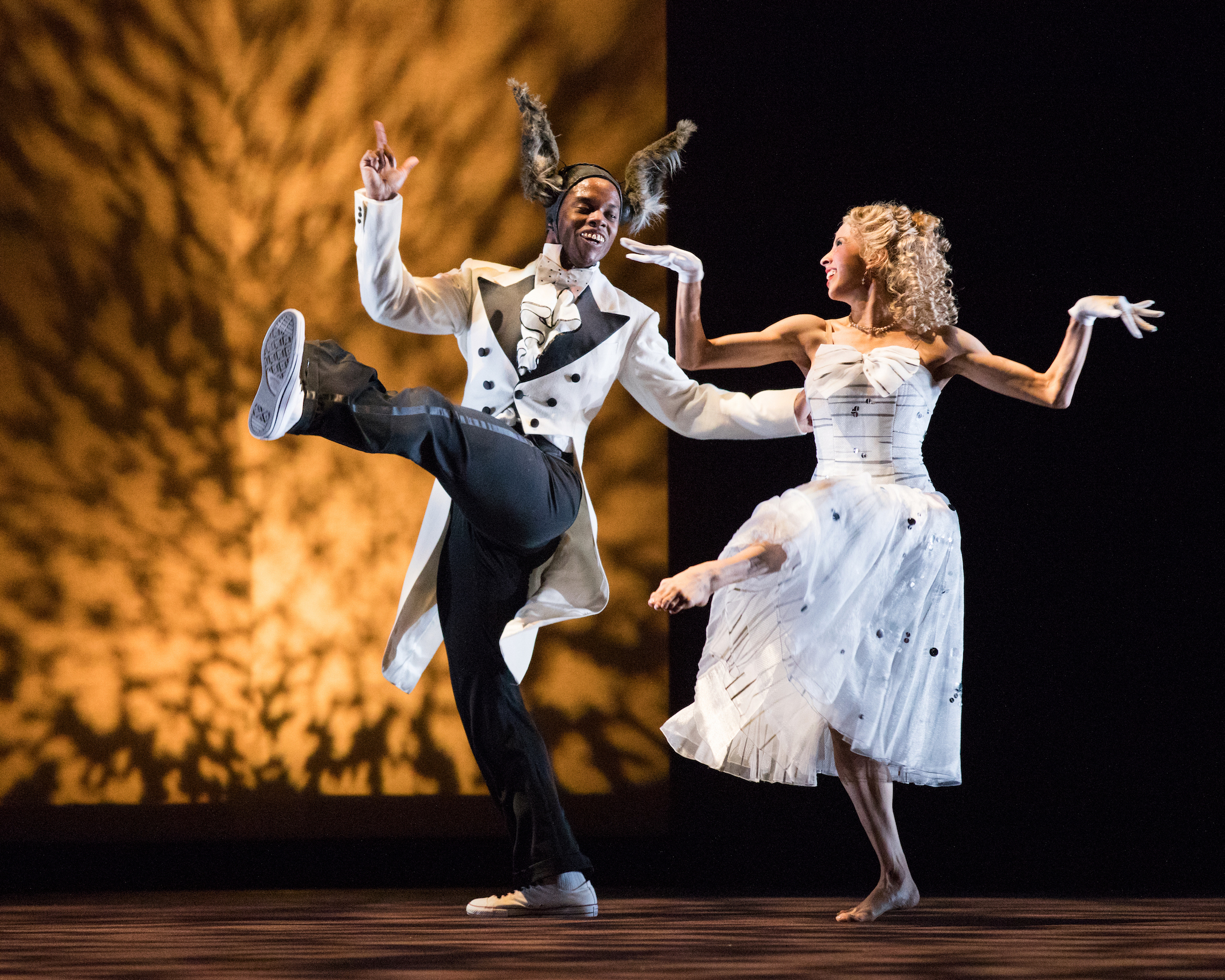Even though John Cranko chose the title Onegin for his ballet based on Alexander Pushkin’s verse-novel, I find its power resides in the dancer playing the role of Tatiana. It is her transformation, from withdrawn and innocent to forthright and assertive, that makes the story so compelling. For this reason, among many others, Onegin is a riveting and important addition to Ballet West’s repertory: the women in the company shine in Cranko’s challenging and dramatic choreography.
Onegin is built upon a series of contrasts: between sisters, between couples, and between different phases of our lives. The credibility of the story depends upon dancers’ ability to portray these contrasts without slipping into caricature. On Saturday night, April 6, Beckanne Sisk as Tatiana and Chelsea Keefer as Olga captured the perfect balance between Tatiana’s diffident personality and Olga’s bubbly disposition. Their sisterly affections and squabbles made them endearing and relatable.
The fondness they shared for one another in Act I contrasted with Onegin’s treatment of Tatiana, Olga, and Lensky in Act II. In many ways, Onegin’s character became apparent through the differences he presented: aloof and self-involved instead of attentive and engaging. Every detail of the production’s design emphasized these differences: his dark clothing contrasted with the women’s light, pastel dresses (costume and set design were by Santo Loquasto), and his gaze was often skyward and his gait measured and deliberate. In the role of Onegin, Chase O’Connell presented these differences with a masterful touch, intertwining his choreography with the emotions they conveyed. As tensions escalated between the couples in Act II, with Onegin pulling Olga away from Lensky, and Lensky growing increasingly jealous, their dancing intensified the conflict: the choreography and partnering accelerated and its speed and complexity made visible Lensky’s churning confusion and rage. Jordan Veit beautifully performed the role of Lensky, making his conflict between romance and pride both believable and devastating at the same time.
Soloists Jordan Veit (left) and Chelsea Keefer as Lensky and Olga, with artists of Ballet West. Photo by Beau Pearson.
As a choreographer, Cranko portrayed these plot tensions with a layered approach: there are often two relationships developing simultaneously on the stage. For example, in Act II, Olga and Lensky are visible in the background as she reassures him that her dancing with Onegin is meaningless, while Tatiana performs a solo in the center of the stage that evokes her infatuation with Onegin and discouragement with his dismissal. This kind of simultaneity gives Onegin a cinematic feel: the layering creates a sense of momentum and inevitability, one relationship becomes irrevocably entwined with another. Cranko’s movement design is not only emotionally driven, but also technically complicated. As Olga, Keefer performed her choreography with clarity and ebullience that matched her role: the ballotté steps that began her solo in Act I were buoyant and sparkling, and her turns perfectly captured the swirling attraction she felt towards Lensky.
The entire cast enriched Saturday night’s performance: towards the end of Act I, when the neighbors and relatives of Madame Larina dart across the stage in a diagonal, with the women performing grand jetés, and the men assisting them as they run alongside, the audience burst into applause. It is a testament to the caliber and artistry of the company that they make this ballet, choreographed in 1965, feel fresh, exciting, and relevant today. Although Cranko’s works are brilliant and proving to be timeless, they require large casts of dancers who blend precise attention to details in group formations, with the ability to portray characters and plot developments believably. In his obituary in the New York Times, from 1973, there’s a quote from Cranko that states, “There is the challenge of making a ballet work on two levels—as dance and as story. You fail only if the story becomes more important than the dance.” [1] The dancers of Ballet West excel as both technicians and story-tellers.
Artists of Ballet West in John Cranko’s Onegin. Photo by Beau Pearson.
The word “immersive” is often used to describe events where audience members are in close proximity to dancers or actors, but watching Ballet West perform Onegin, I felt another kind of envelopment. The characters were performed with such credibility, I became absorbed in the conflicts that each of them encountered: Sisk as Tatiana began the performance as a young, introverted, and bookish woman, who transformed into a commanding presence. O’Connell as Onegin conveyed his character’s path from reckless to regretful with such conviction that I felt a newfound appreciation for this role. I also began to wonder about the mirrors that appear throughout the first act, from the scene when Olga “discovers” Lensky in her reflection, to the mirror pas de deux between Tatiana and Onegin. Are these Cranko’s way of commenting on reflections, and the contrasts between what we desire for ourselves and how others see us?
Undoubtedly the music and production design contributed to my sense of absorption: Jared Oaks conducted the Ballet West Orchestra and the music by Tchaikovsky (arranged and orchestrated by Kurt-Heinz Stolze) supported and intensified my emotional engagement with the dancing. The sets and costumes, courtesy of the National Ballet of Canada, added sumptuous visual layers to the performance.
Although I love how the program contains translations of Pushkin’s writing, specifically the letter that Tatiana writes to Onegin, and Onegin’s letter to Tatiana, I found this offered yet another contrast: Cranko’s Onegin performed by Ballet West is a rich and lived experience that conveys Pushkin’s multifaceted characters in ways that words cannot convey. The gestures, actions, and partnering of the dancers communicate viscerally and kinesthetically the turmoil, heartbreak, and resolve of Pushkin’s characters. In Ballet West’s dancers, Cranko’s choreography finds a perfect company to transport us into and through this enthralling and revealing story.
Principal Artists Beckanne Sisk and Chase O'Connell as Tatiana and Onegin. Photo by Beau Pearson.
[1] https://www.nytimes.com/1973/06/27/archives/john-cranko-dies-at-45-stuttgart-ballet-director-hurok-pays-tribute.html
Kate Mattingly is an assistant professor of dance at the University of Utah. She has a doctoral degree in performance studies from UC Berkeley, and has had writing published in The New York Times, The Village Voice, Dance Research Journal, Dance magazine, and Pointe magazine, among others.
















